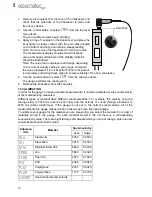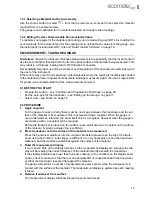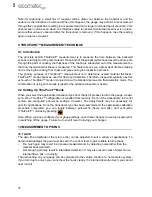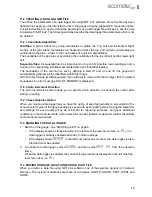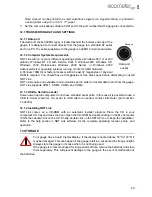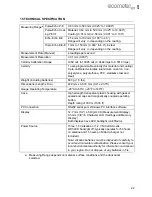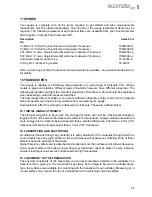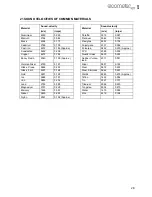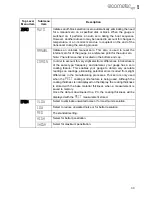
27
en
20 APPLICATION NOTES
20.1 MEASURING TUBING
When measuring a piece of pipe to determine the thickness of the pipe wall, orientation of the
transducers is important.
If the diameter of the pipe is larger than approximately 100 mm (4”), measurements should be made
with the transducer oriented so that the gap in the wearface is perpendicular (at right angles) to the
long axis of the pipe.
If the diameter of the pipe is small, two measurements should be performed, one with the wearface
gap perpendicular to the long axis of the pipe, another with the gap parallel to the long axis of the
pipe - see illustration. The smaller of the two displayed values should then be taken as the thickness
at that point.
20.2 MEASURING HOT SURFACES
The velocity of sound through a material depends upon the temperature of the material. As
materials heat up, the velocity of sound in the material decreases. In most applications with surface
temperatures less than approximately 100°C (~200°F), no special procedures are required. At
temperatures above 100°C (~200°F), the change in sound-velocity of the material being measured
starts to have a noticeable effect upon the accuracy of ultrasonic measurement.
When performing measurements on hot surfaces, it may also be necessary to use a
high-temperature transducer. It is recommended that the transducer be left in contact with the
surface for as short a time as needed to acquire a stable measurement. While the transducer is in
contact with a hot surface, it will begin to heat up, and through thermal expansion and other effects,
may adversely affect the accuracy of measurements.
20.3 MEASURING LAMINATED MATERIALS
Your gauge is not suitable for measuring the thickness of laminated materials. If you need to
measure this type of material, please consider using one of the other ultrasonic thickness gauges
available from Elcometer NDT - please refer to www.elcometerndt.com for details.
Perpendicular
Parallel

